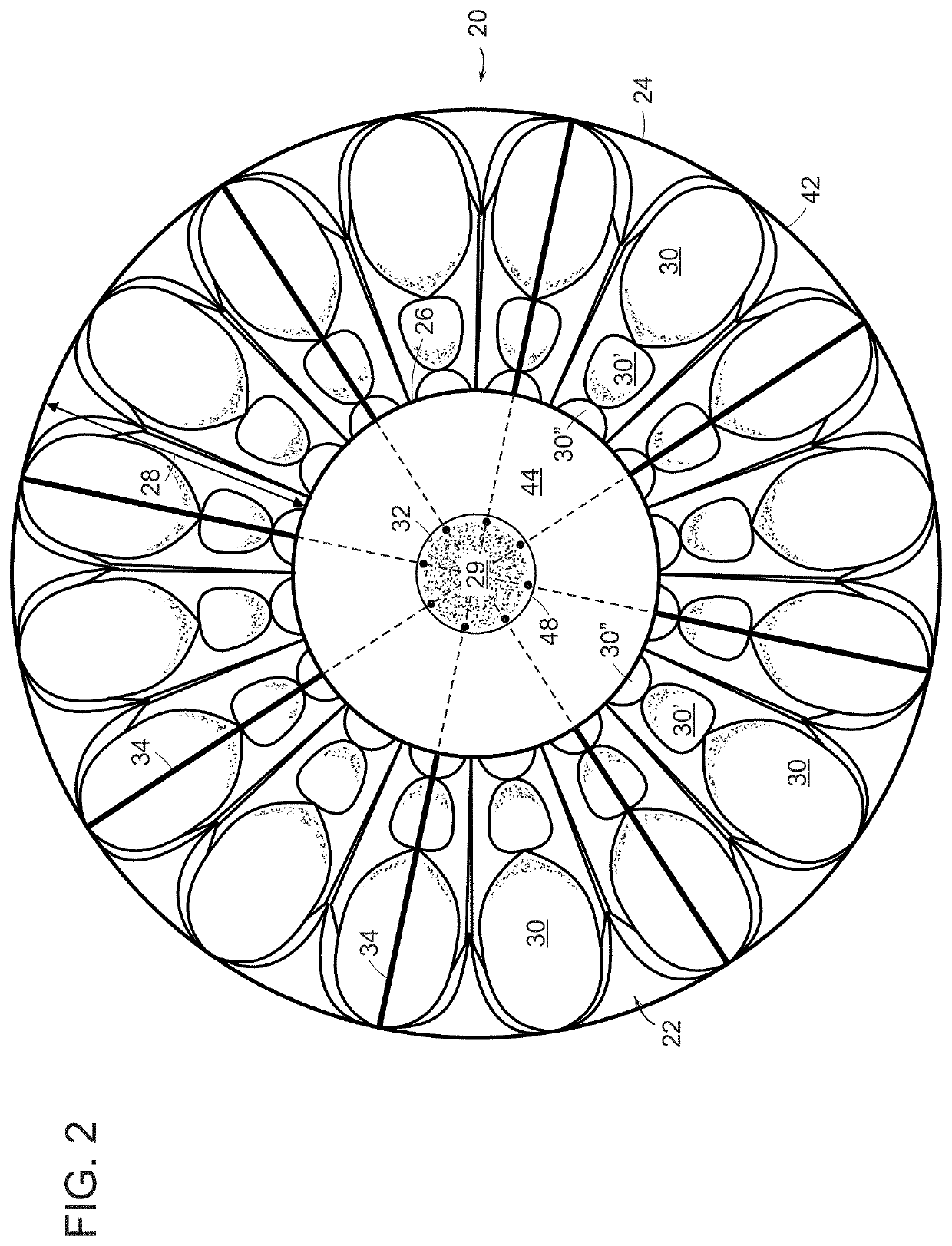In vivo tissue engineering devices, methods and regenerative and cellular medicine employing scaffolds made of absorbable material
- Summary
- Abstract
- Description
- Claims
- Application Information
AI Technical Summary
Benefits of technology
Problems solved by technology
Method used
Image
Examples
Embodiment Construction
[0035]An in vivo tissue engineering device 20 according to the present invention is shown in FIGS. 1 and 2 and includes a scaffold 22 made of one or more sheets of mesh absorbable material which is, by nature, porous. The scaffold has a wide base or proximal portion 24, a narrower apex or distal portion 26 and a tapering, sidewall 28 extending between the base portion and the apex portion. The sidewall 28 is formed by a plurality of partially open, tissue engineering chambers 30 such that the sidewall has a rugose configuration formed by pleats or folds of the one or more sheets of absorbable material. The scaffold has a hollow inner region 29 which can be formed by a central core 32 extending between the base portion and the apex portion. If required by size, volume and stability, a plurality of L-shaped tubular struts 34 made of absorbable material can be radially arranged on the scaffold with legs extending through the core and bent 90° to terminate adjacent the perimeter of the ...
PUM
| Property | Measurement | Unit |
|---|---|---|
| Size | aaaaa | aaaaa |
| Shape | aaaaa | aaaaa |
| Width | aaaaa | aaaaa |
Abstract
Description
Claims
Application Information
 Login to View More
Login to View More - R&D
- Intellectual Property
- Life Sciences
- Materials
- Tech Scout
- Unparalleled Data Quality
- Higher Quality Content
- 60% Fewer Hallucinations
Browse by: Latest US Patents, China's latest patents, Technical Efficacy Thesaurus, Application Domain, Technology Topic, Popular Technical Reports.
© 2025 PatSnap. All rights reserved.Legal|Privacy policy|Modern Slavery Act Transparency Statement|Sitemap|About US| Contact US: help@patsnap.com



